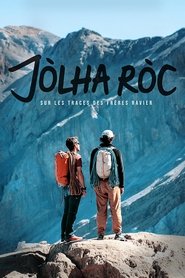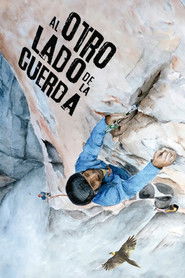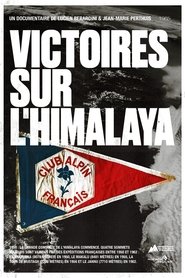detail profile jean ravier

Riwayat Hidup
Jean Ravier and his twin brother Pierre Ravier, born in Paris on October 20, 1933 to Olympe and Albert Ravier, are French climbers and Pyrenees climbers.
They have an older sister and will be followed by four other sisters and two brothers.
In 1936, the family moved to Bordeaux where Albert took over a business selling spare parts for automobiles during the Somme.
In 1940, mobilized, he was taken prisoner and remained so for a year.
Olympe and her children retreated to Tuzaguet, in the Hautes-Pyrénées.
Turbulent and quarrelsome, the twins climbed trees and explored the many caves in the region.
With their aunt Line, the "free electron" of the family, they listened to Radio London.
After the Allied landings of June 6, 1944, they made a huge Lorraine cross out of fabric and unfurled it from the top of a large magnolia.
In 1946, they discovered the mountain during a family excursion to Néouvielle.
In 1950, they made their first climbs alone.
After climbing the north face of the Petit Pic du Midi d'Ossau, they climbed the Gaube couloir in Vignemale in 1951, their first ice climb which was then the most difficult in the Pyrenees.
From then on, they formed an almost inseparable rope team that collected many first ascents in the Pyrenees during the 1950s and 1960s.
The Ravier brothers were the main figures in the post-war revival of Pyreneism and climbed with other mountaineers such as Guy Santamaria, Raymond Despiau, Claude Dufourmantelle and especially with Pierre Bouchet.
They also sometimes climbed abroad, in Spain, in the Caucasus or in Algeria in the Hoggar.
Jean Ravier was selected to participate in 1962, along with Lionel Terray, Robert Paragot, René Desmaison and Guido Magnone, in the French expedition to Jannu (7,710 m), the summit of which he reached on April 28, the day after the success of the first expedition team.
The Ravier brothers continued to climb until the early 2000s.
Jean Ravier died on September 23, 2022.
Info Pribadi
Peran Yang Di Mainkan Jean Ravier
 Bastien Lardat and Jordi Noguere two...
Bastien Lardat and Jordi Noguere two...Jòlha Ròc, following in the footsteps of the Ravier brothers 2020
Bastien Lardat and Jordi Noguere, two rope brothers, invite us to pay tribute to the pioneers of modern Pyrenees, through a new kind of sporting journey. Pierre and Jean Ravier opened the way several decades ago, drawing on the Pyrenean reliefs one of the most beautiful pages of amateur climbing excellence. In three days, climbing and connecting 3 legendary north faces by Ravier on foot is the crazy challenge that Bastien and Jordi have set themselves. 3 days, 3 routes, 85 km of pedestrian connection, to arrive at the end of the north face of the Tour de Marboré in Gavarnie, the Dièdre Jaune du Vignemale and the Embarradère du Pic du Midi d'Ossau.
 The word Pyreneism was invented by...
The word Pyreneism was invented by...Pyreneism Yesterday And Today 2019
The word Pyreneism was invented by the writer Henri Beraldi at the end of the 19th century. Its definition did not come down to a simple practice of mountaineering in the Pyrenees. To be recognized as a Pyrenean, it was necessary to “ascend, write and feel”. An approach to the mountains, according to him, necessarily accompanied by an artistic or intellectual activity. This documentary looks back at the Pyrenees who have left their mark on history, before interviewing contemporary mountain dwellers who, through their mountain practice, consider themselves, or not, Pyreneanists. What prompted Beraldi to coin this term? Does it result from a Pyrenean complex facing the Alps? Chauvinism or a demand for identity? And today, does this word still have meaning? Beyond the reflection on the subject, this film is a wonderful tribute to the massif.
 Nine of the most outstanding climbers...
Nine of the most outstanding climbers...The Other End of the Rope 2018
Nine of the most outstanding climbers nowadays come together in this striking documentary about the ethics, values and the very nature of climbing. The brothers Ravier, Christian Ravier, Ekaitz Maiz, Mikel Zabalza, Arkaitz Yurrita, Eneko César and Unai Mendia will show the unknown side of climbing in the Pyrenees. Best Film - Ukerdi Film Festival 2018. Best Documentary - Cuentamontes 2018. Official Selections 2018: Explos Film Festival, Festival du Film de Montagne de Cluses. Official Selection 2017: Bilbao Mendi Film Festival.
 The two brothers Jean and Pierre...
The two brothers Jean and Pierre...The Ravier Brothers - The Pyrenees Adventure 2008
The two brothers Jean and Pierre Ravier have opened almost all the "classic" (difficult) routes in climbing and mountaineering in the Pyrenees. Roped together at the waist using a few flat knots and little equipment, the two twin brothers achieved more than 200 firsts across the entire massif. A unique style and commitment, a state of mind made up of adventure, literature, inventiveness and friendship. Unclassifiable and outgoing, after 60 years of Pyrenees, their desire for the mountains is intact. When does a race start? How does the idea, the desire, come about? What sense does it make to only achieve firsts? And what is the role of the Pyrenees themselves in this reciprocal and endless game of attraction?
 Three years after the 1959 expedition abandoned 350...
Three years after the 1959 expedition abandoned 350...Jannu, Chronicle of a Conquest 1962
Three years after the 1959 expedition, abandoned 350m from the summit, Lionel Terray leads a new assault on Jannu, one of the most demanding peaks in the Himalayas. At the base camp, equipment and food rations are prepared. The conditions are optimal and the ascent can begin. The camera follows the progress of the mountaineers and Sherpas as closely as possible, from one high-altitude camp to another: installing fixed ropes, progressing over crevasses, in the middle of frozen towers, vertically down immense ice falls or along the edge of sharp ridges. From 7000m, oxygen bottles become essential, as the difficulty of the climb prevents acclimatization. The expedition is a total success: the majority of its members reach the 7710m summit.
 Retrospective of four major peaks climbed...
Retrospective of four major peaks climbed...Victories on the Himalayas 1960
Retrospective of four major peaks climbed by French expeditions: Annapurna (8078m) in 1950; Makalu (8481m) in 1955; Mustagh Tower (7273m) in 1956 and Le Jannu (7710m) in 1962. A film by Lucien Berardini and Jean-Marie Perthus with the support of the French Alpine Club and the FFME (French Mountain and Climbing Federation).
